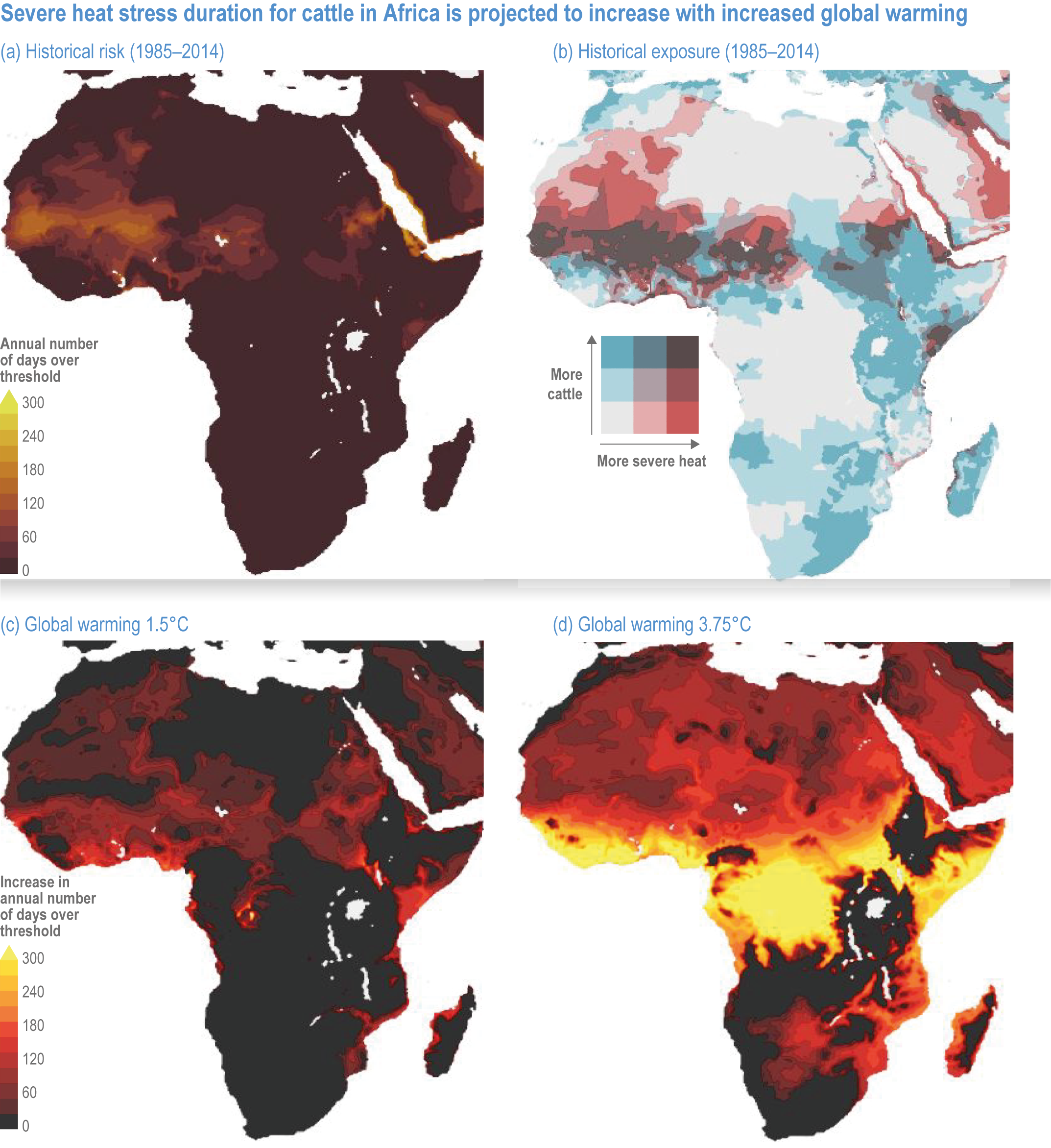Figure 9.24
Figure caption
Figure 9.24 | Severe heat stress duration for cattle in Africa is projected to increase with increasing global warming.
(a) Number of days per year with severe heat stress in the historical climate (1985–2014).
(b) Historical cattle exposure to severe heat. Cattle density data from Gilbert et al. (2018).
(c, d) Projected increase in the number of days per year with severe heat stress for a global warming level of 1.5°C and 3.75°C. Severe heat stress for cattle is projected to become much more extensive in the future in Africa at increased global warming levels. Strong mitigation would substantially limit the spatial extent and the duration of cattle heat stress across Africa. Heat stress is estimated using the Temperature Humidity Index with a value greater than 79 considered the onset of severe heat stress (Livestock Weather Safety Index) (Lallo et al., 2018). Global warming of 1.5°C used scenario SSP1–2.6 and global warming of 3.75°C used SSP5-8.5, both for 2070–2099 (12 climate models from O’Neill et al., 2016; Tebaldi et al., 2021). Global warming levels were calculated using a baseline for pre-industrial global mean temperature of 1850–1900.
